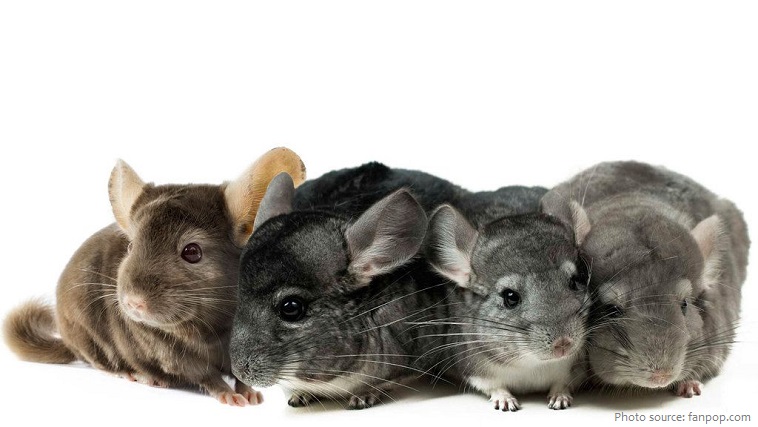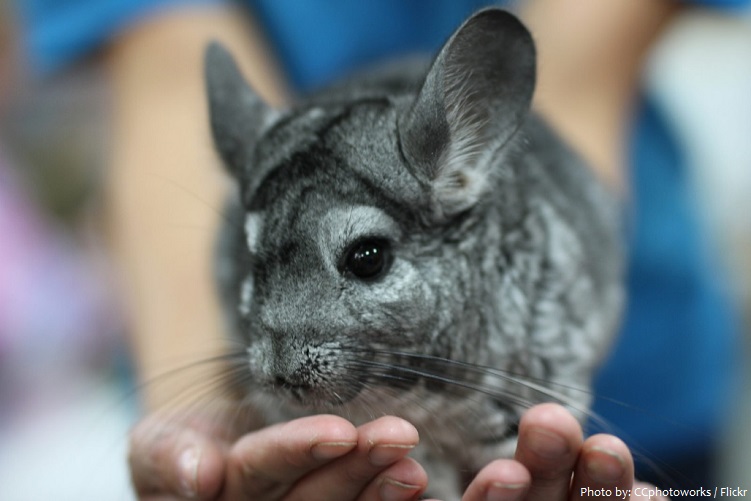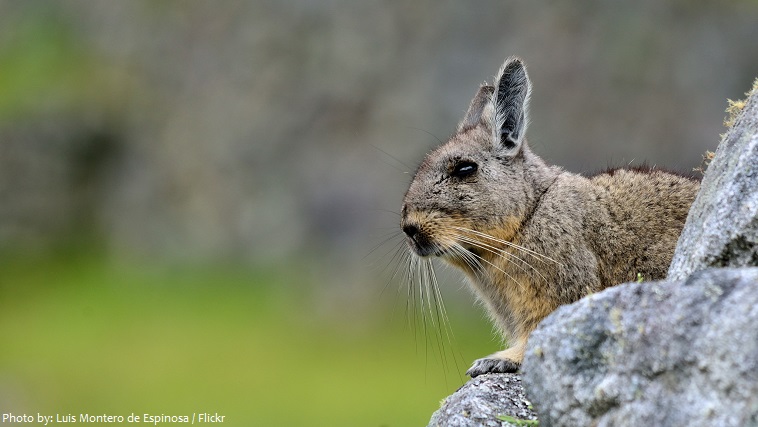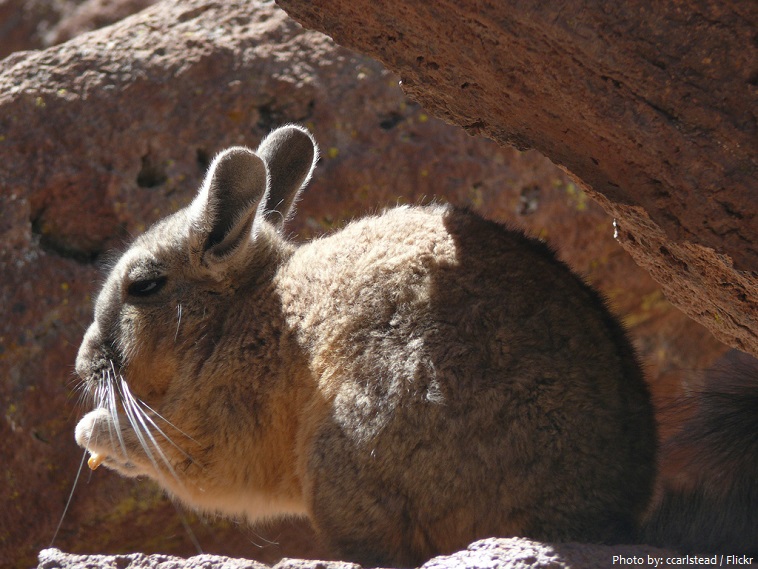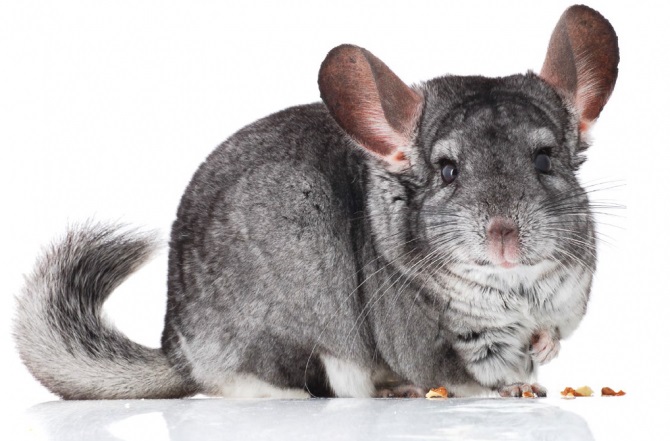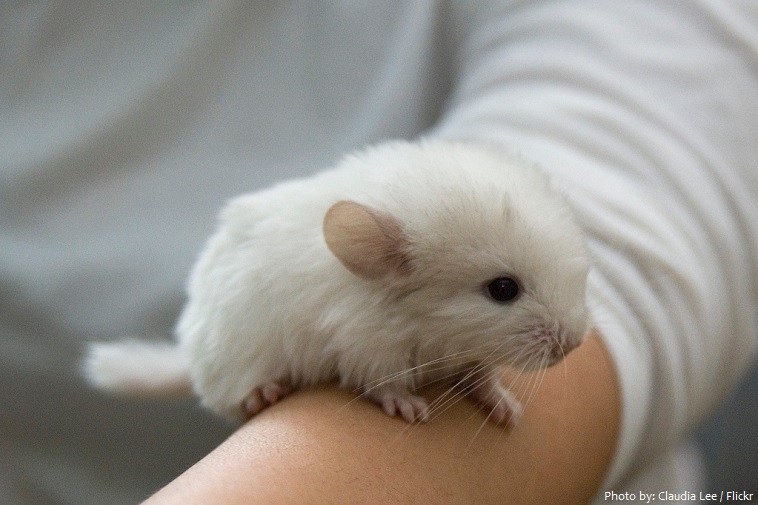Chinchillas are rodents belonging to the family Chinchillidae, which includes four species of viscachas and two species of chinchillas.
The two species of chinchillas are the long-tailed chinchilla (Chinchilla lanigera) and short-tailed chinchilla (Chinchilla chinchilla).
Once very common, chinchillas were hunted almost to extinction.
Historically, chinchillas lived in an area that included parts of Bolivia, Peru, Argentina, and Chile, but today, colonies in the wild are known only in Chile.
Their habitat includes mountain shrub, grassland the barren, arid areas of mountains.
They live at high altitudes up to 5,000 meters ( 16,400 feet) above sea level.
The lifespan of chinchilla is about 10 years in the wild and up to 20 years in captivity.
Chinchillas weigh up to 800 grams (1.8 pounds) with a compact body up to 38 centimeters (15 inches) long, large eyes, long ears, and a moderately long, bushy tail of up to 15 centimeters (6 inches).
Their silky, dense fur is generally bluish to brownish gray except for the yellowish white underparts; various other colors of chinchilla have been bred in captivity.
The thick fur helps protect chinchillas from cold temperatures as well as prevent water evaporation.
Their feet are highly adapted for movement on rocks. They have weak hind claws and pads on their feet to prevent slipping.
A chinchilla can run up to 24 km/h (15 mph) when escaping a predator. They don’t typically run, however.
They are agile jumpers and can jump up to 1.8 meters (6 feet).
They usually hide during the day in burrows or crevices in rocks, emerging during the evening and night to feed on any available vegetation. On particularly bright days they occasionally emerge during daylight hours to forage.
Chinchillas will eat any vegetation, such as grasses and herbs, within their range. The animal sits up on its hind legs to eat, using its front paws to bring the food to its mouth. Occasionally, chinchillas may eat insects. In dry habitats, chinchillas depend on morning dew for water. They also obtain water from the flesh and fruit of cacti.
In their native habitats, chinchillas live in social groups that resemble colonies, but are properly called herds. Herd sizes can range from 14 members up to 100, this is both for social interaction as well as protection from predators.
Chinchillas can breed any time of the year. Their gestation period is 111 days, longer than most rodents. Due to this long pregnancy, chinchillas are born fully furred and with eyes open. Litters are usually small in number, predominantly two.
Predators in the wild include birds of prey, skunks, cats, snakes and canines.
The IUCN places the species as endangered because of exploitation and habitat loss.
By the end of the 19th century, chinchillas had become quite rare after being hunted for their ultra-soft fur.
Chinchilla has very valuable fur. In fact, when its size and weight are considered, the fur is the most valuable in the world. Coats made of wild chinchilla pelts have sold for up to $100,000. It may take up to 400 pelts to make such a coat.
Most chinchillas currently used by the fur industry for clothing and other accessories are farm-raised.
They remain scarce in the wild but are raised commercially and also sold as housepets.
Chinchillas are popular pets, but require much care. They should only be purchased by experienced pet owners who are aware of their needs.
They must have extensive exercise and dental care, due to their teeth continually growing throughout their life span, and since they lack the ability to sweat, temperatures need to be carefully controlled.
Chinchillas are easily distressed and when they are unhappy they may have physical symptoms. In protecting their health, care should be taken not to disturb them, and many things disturb them.
Chinchillas are a type of pocket pet. Pocket pet is a term used to refer to a small pet mammal commonly kept as a household pet.
Chinchillas are related to guinea pigs and porcupines.
